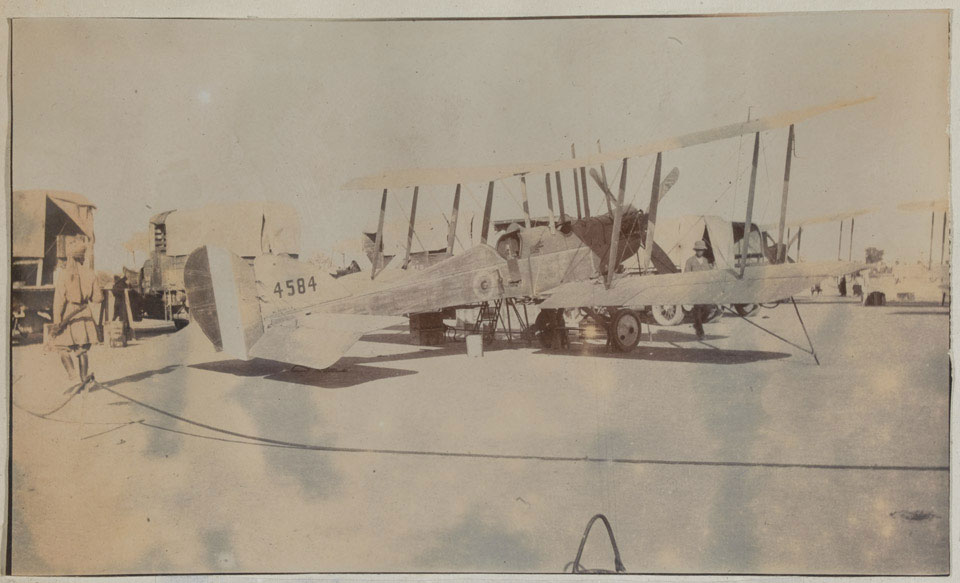
Online Collection
A British airfield, North West Frontier, 1919
Photograph, 3rd Afghan War, 1919.
The BE2 was designed and developed by the Royal Aircraft Factory as a reconnaissance and light bomber aircraft and first flew in 1912. The BE2C was a redesign which served in France in 1915 but its poor performance gained it the nickname, 'Fokker Fodder'. Withdrawn from front line service in France the BE2 continued to be used in other theatres including Mesopotamia, and in a variety of support roles, including training, coastal patrol and night fighting.
Airpower played a key role during the 3rd Afghan War (1919) and the revolt in Waziristan (1919-1920). Five Royal Air Force (RAF) squadrons of BE2Cs, Bristol F2Bs, De Haviland DH9As and De Haviland DH-bombers were used in strafing and bombing attacks on the rebellious frontier tribes and on targets in Afghanistan itself, including Kabul and Jellalabad. The attacks on Afghan towns, although small scale, helped bring King Amanullah to the negotiating table.
One of 267 photographs probably compiled by Private A E Neal, 2/6 Battalion The Royal Sussex Regiment, India 1916-1919, Waziristan, 1917 and Afghanistan, 1919.
NAM Accession Number
NAM. 1990-07-201-92
Copyright/Ownership
National Army Museum, Orphan work
Location
National Army Museum, Study collection
Object URL
https://collection.nam.ac.uk/detail.php?acc=1990-07-201-92

